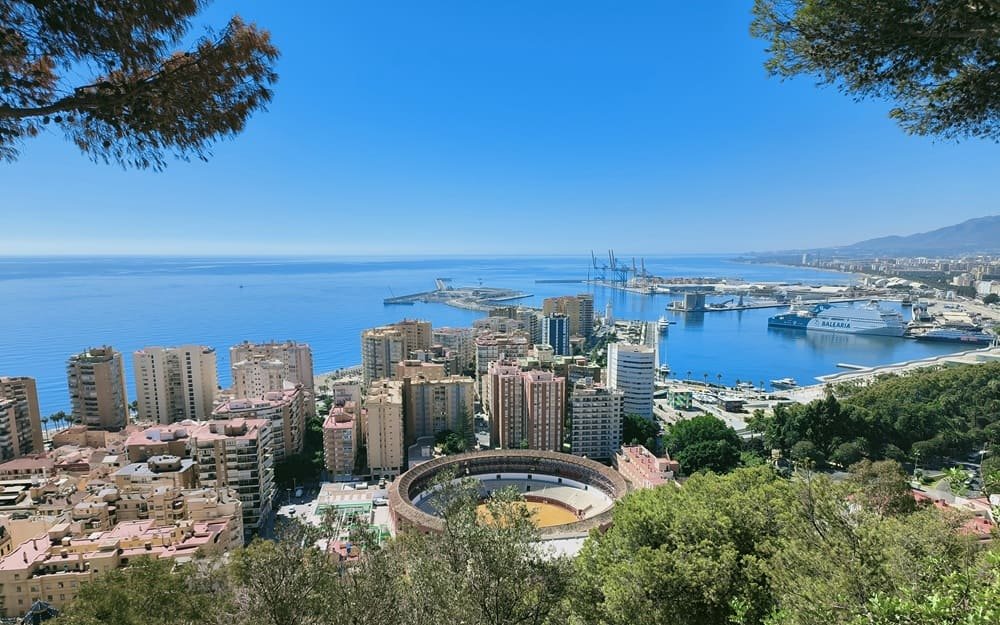
Málaga City: Your Complete Guide to Enjoy Andalusia’s Coastal Capital
Discover the vibrant heart of Costa del Sol, where ancient history meets modern Mediterranean charm. This guide will help you explore Málaga’s unique geography, perfect climate, and rich cultural offerings.
Geographical Heart of Andalusia
Prime Location on the Costa del Sol
Málaga city serves as the capital of Málaga province, strategically positioned as the central hub of Andalusia’s famous coastline. The urban area enjoys a spectacular setting between the Mediterranean Sea and the Montes de Málaga mountain range.
Key Distances from Málaga City
Andalusian Capitals
- Seville: 200 km (2.5 hour drive)
- Granada: 130 km (1.5 hour drive)
- Córdoba: 180 km (2 hour drive)
Major Spanish Cities
- Madrid: 530 km (2.5 hour high-speed train)
- Barcelona: 900 km (1.5 hour flight)
- Valencia: 600 km (6 hour drive)
Costa del Sol Highlights
- Marbella: 60 km (45 minute drive)
- Estepona: 85 km (1 hour drive)
- Nerja: 55 km (50 minute drive)
Year-Round Mediterranean Climate
Perfect Weather Conditions
Málaga boasts one of Europe’s most pleasant climates, with:
- Average annual temperature of 19°C (66°F)
- Over 300 sunny days per year
- Mild winters (average 17°C/63°F in January)
- Warm summers (average 30°C/86°F in August)
Seasonal Highlights
Spring (March-May)
Ideal for sightseeing with temperatures 16-24°C (61-75°F) and blooming almond trees.
Summer (June-August)
Perfect beach weather with sea breezes cooling the 28-32°C (82-90°F) daytime highs.
Autumn (September-November)
Warm sea temperatures and fewer crowds, with averages of 18-26°C (64-79°F).
Winter (December-February)
Mildest in Europe, often allowing outdoor dining with 12-18°C (54-64°F) days.
The Fascinating History of Málaga
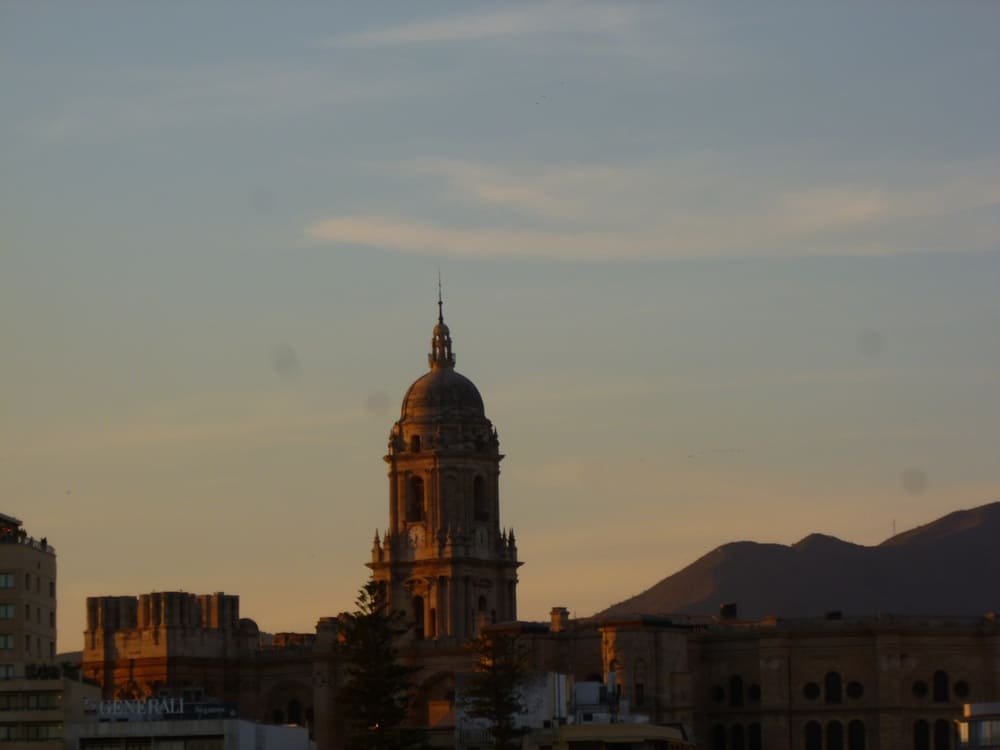
With nearly 3,000 years of continuous habitation, Málaga stands as one of Europe’s oldest cities. Its strategic coastal location made it a cultural crossroads, leaving layers of Phoenician, Roman, Arabic, and Christian influences that shape its unique character today.
First Human Settlements
Archaeological evidence reveals Bronze Age settlements (1300 BC) at the foot of Gibralfaro hill. The natural harbor and freshwater springs made this area ideal for early communities, with artifacts showing trade connections across the Mediterranean.
Phoenician and Roman Málaga
Founded as Malaka by Phoenician traders in 770 BC, the city became a major commercial port. Under Roman rule (from 218 BC), it flourished as Malaca, complete with a theater, forums, and production centers for garum (fish sauce). Excavations continue to reveal this era’s importance.
Arab Conquest (711-1487)
The Moorish period transformed Málaga into a thriving Islamic center. Landmarks like the Alcazaba fortress and Gibralfaro Castle date from this golden age when the city became renowned for its silk trade and sophisticated irrigation systems.
Christian Reconquest & Renaissance
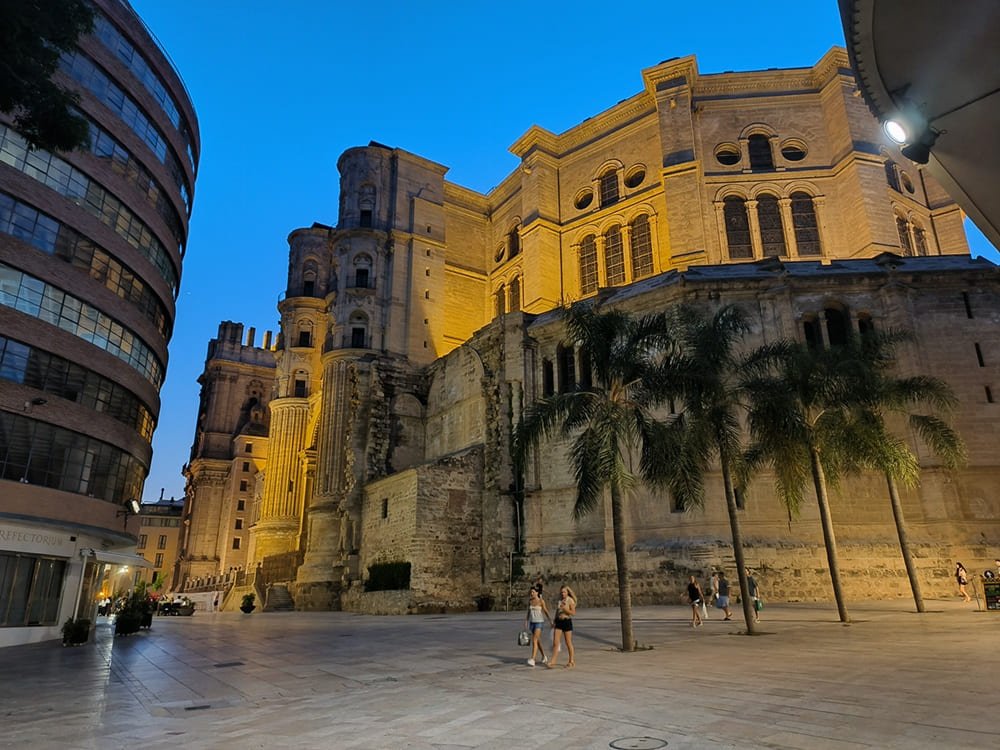
After the Catholic Monarchs captured Málaga in 1487, the city underwent dramatic changes:
- Mosques converted into churches
- Construction of the Renaissance Cathedral (started 1528)
- Development of Plaza Mayor (now Constitución Square)
The iconic “La Manquita” cathedral, with its unfinished south tower, remains the most visible symbol from this era.
20th-21st Century Transformation
Modern Málaga has reinvented itself through strategic developments:
Population Growth
1900: 130,000 → 2023: 580,000
Economic Evolution
From industrial decline to tech/tourism hub
Cultural Landmarks
Picasso Museum, Pompidou Center, Soho Arts District
Today, Málaga blends its rich history with cosmopolitan energy, attracting digital nomads, cultural tourists, and sun-seekers alike.
Málaga’s Gastronomy: A Mediterranean Feast
Málaga’s cuisine reflects its coastal location and agricultural richness, blending fresh seafood with mountain-grown products. The city’s culinary identity combines traditional recipes passed through generations with innovative contemporary touches, all enhanced by local wines and the golden hue of virgin olive oil.
Málaga’s Food Production: Land and Sea Bounty
Mediterranean Fishing Tradition
The fishing fleet of Málaga brings daily catches of:
- Boquerones: Fresh anchovies, the city’s signature fish
- Espetos: Sardines skewered and grilled on the beach
- Calamares: Squid from the Costa del Sol waters
Agricultural Products
The fertile hinterland produces:
- Tropical fruits: Unique European-grown mangoes and avocados
- Almonds & olives: Base for countless traditional recipes
- Vegetables: Artichokes, asparagus, and Málaga’s giant tomatoes
Wine Country
The Málaga DOC wine region is famous for:
- Sweet wines: Centuries-old tradition of fortified Muscat wines
- New wave wines: Dry whites from the Axarquía mountains
- Raisins: Sun-dried muscatel grapes, a protected product
Iconic Dishes of Málaga
1. Porra Antequerana
The local version of gazpacho, thicker and topped with jamón and hard-boiled eggs, originating from nearby Antequera.
2. Boquerones al Limón
Marinated fresh anchovies served with lemon and parsley – a staple tapa in every local bar.
3. Plato de los Montes
Hearty mountain dish with pork loin, chorizo, fried eggs, and potatoes.
4. Ajoblanco
Chilled almond and garlic soup, often served with grapes – perfect for hot summer days.
Where to Eat in Málaga
Traditional Tabernas
El Pimpi: Iconic bodega with Andalusian charm and local wines
Casa Lola: Classic tapas near the cathedral
Modern Gastronomy
José Carlos García: Michelin-starred seafood by the port
Uvedoble: Creative twists on traditional flavors
Local Favorites
Mercado Atarazanas: The central market’s food stalls
Chiringuitos: Beachfront fish restaurants in El Palo
Must-See Attractions in Málaga
Málaga offers an exceptional blend of historical treasures and contemporary attractions. From ancient fortresses to modern art museums, the city’s diverse sights tell the story of its 3,000-year history while showcasing its vibrant present.
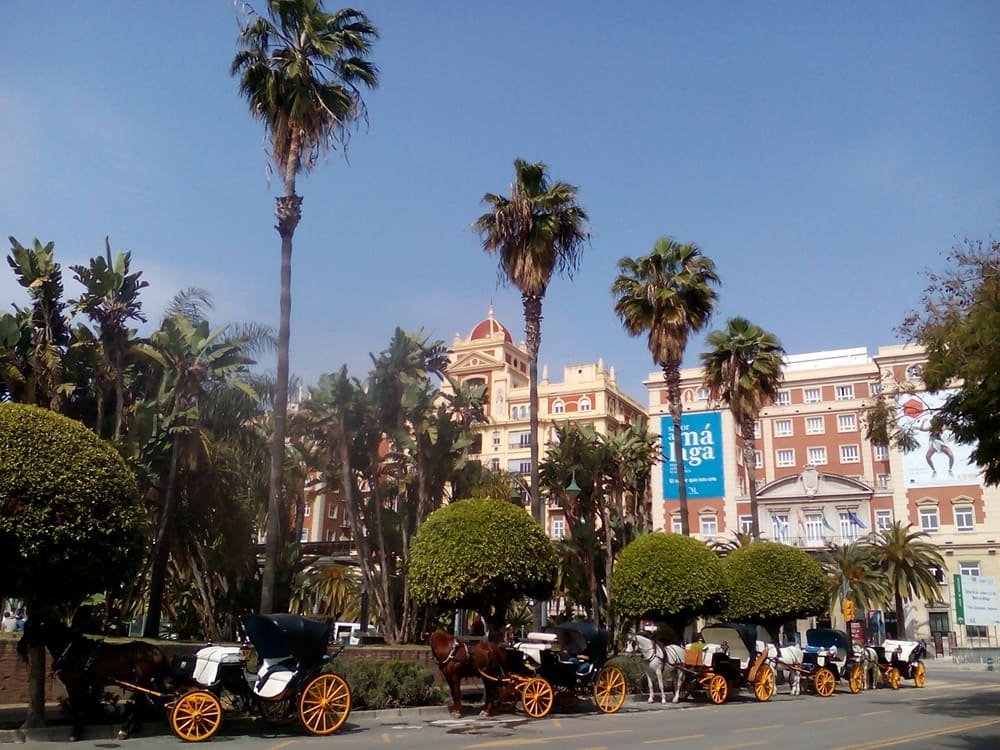
Historic Center: The Soul of the City
Málaga’s compact historic center is a maze of narrow streets bursting with life. Key highlights include:
- Plaza de la Constitución: The main square since Moorish times
- Calle Larios: Elegant shopping street with 19th-century architecture
- Mercado Atarazanas: 14th-century market with Moorish gates
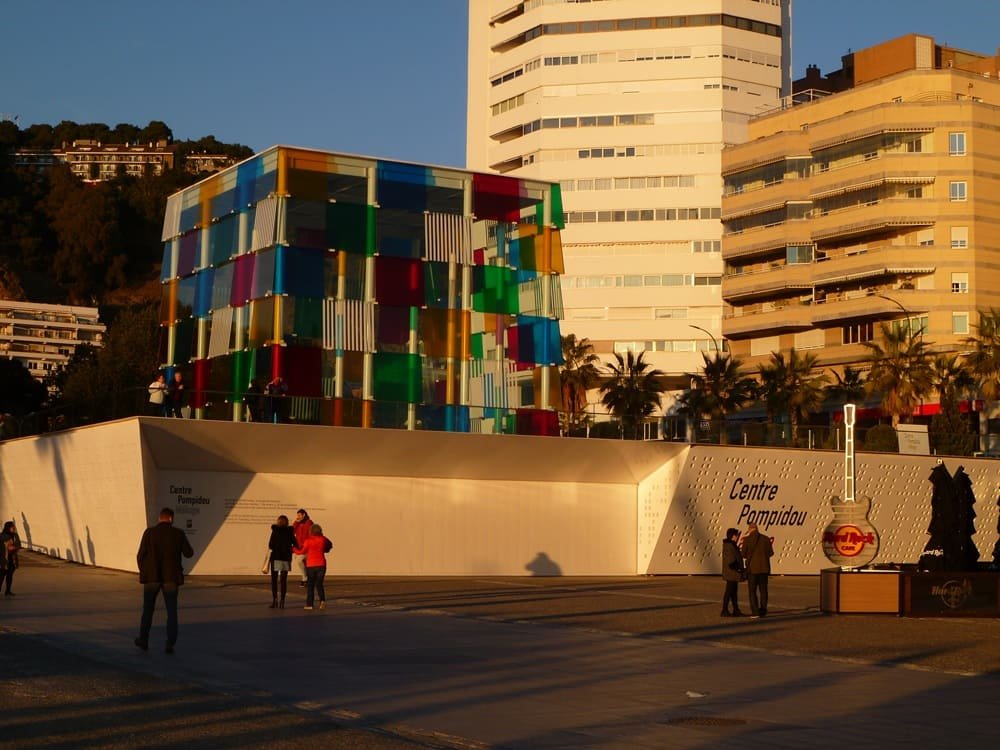
Iconic Monuments
Gibralfaro Castle
The 14th-century Moorish fortress offers panoramic city and sea views, connected to the Alcazaba by dramatic walls.
La Manquita Cathedral
Málaga’s Renaissance cathedral (1528-1782) with its unfinished south tower dominates the old town skyline.
Alcazaba
The best-preserved Moorish fortress-palace in Spain, with 11th-century walls, gardens, and Roman theater views.
Hidden Gems
La Concepción Botanical Garden
19th-century tropical paradise with 3,000+ plant species spread across 23 hectares of landscaped gardens.
Roman Theater
1st-century AD theater accidentally discovered in 1951, now hosting summer performances beneath the Alcazaba.
Baños del Carmen
Historic seaside bathhouse (1918) turned into a unique nightlife spot with ocean views.
Málaga Port
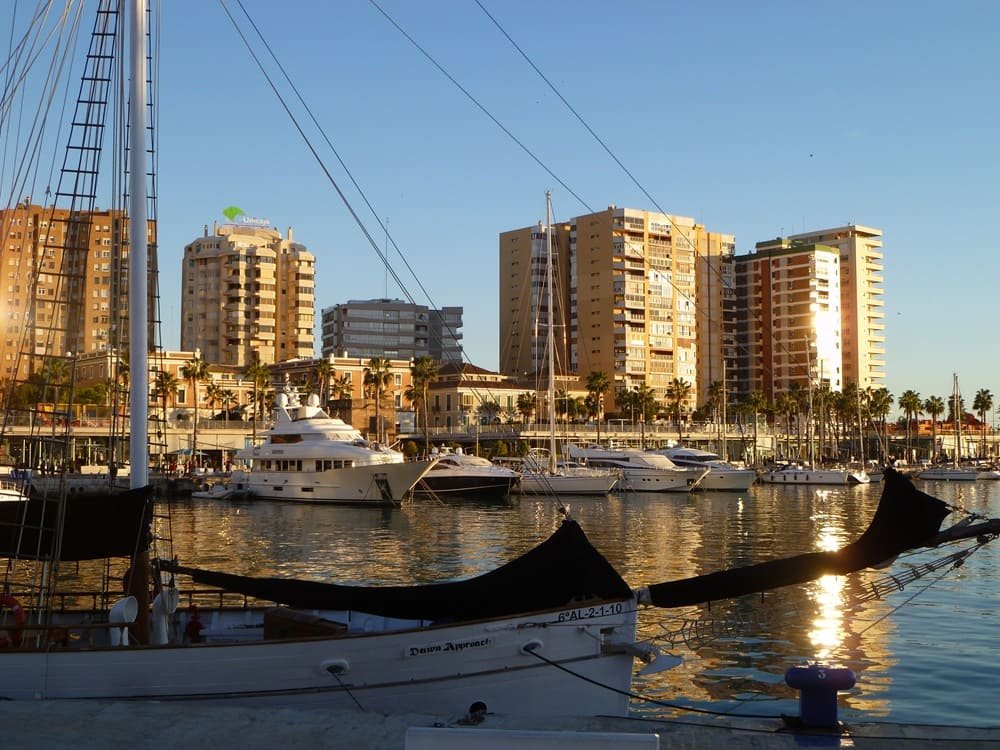
The transformed Muelle Uno area combines cruise port, shopping, and dining with stunning Mediterranean vistas.
Contemporary Art Scene
From the Pompidou Center’s colorful cube to CAC Málaga’s avant-garde exhibitions.
Málaga’s Beaches
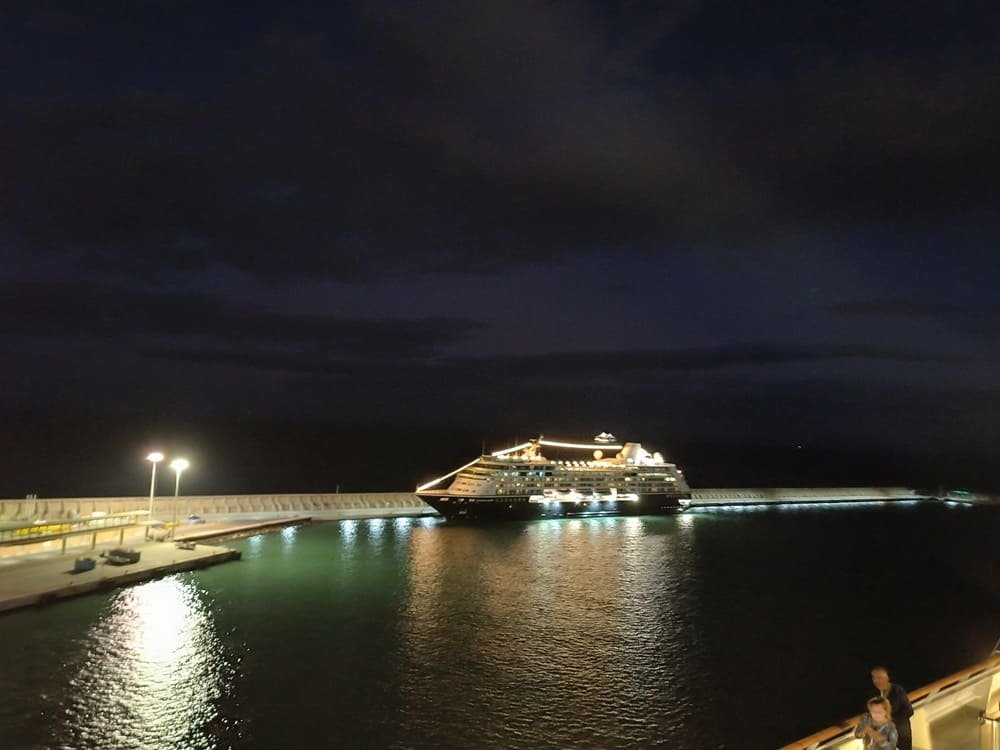
The city boasts 16 urban beaches along 14km of coastline:
- La Malagueta: Most central with chiringuitos (beach bars)
- Pedregalejo: Traditional fishing district with calm waters
- Playa de la Misericordia: Longest beach (3km) west of the port
- Baños del Carmen: Small cove with natural rock pools
How to Get to Málaga: Transportation Options
Well-connected by land, sea, and air, Málaga offers multiple convenient access routes. Whether arriving by train, bus, cruise ship, or private vehicle, the city’s modern infrastructure makes arrival seamless.
RENFE Málaga Airport Train Station
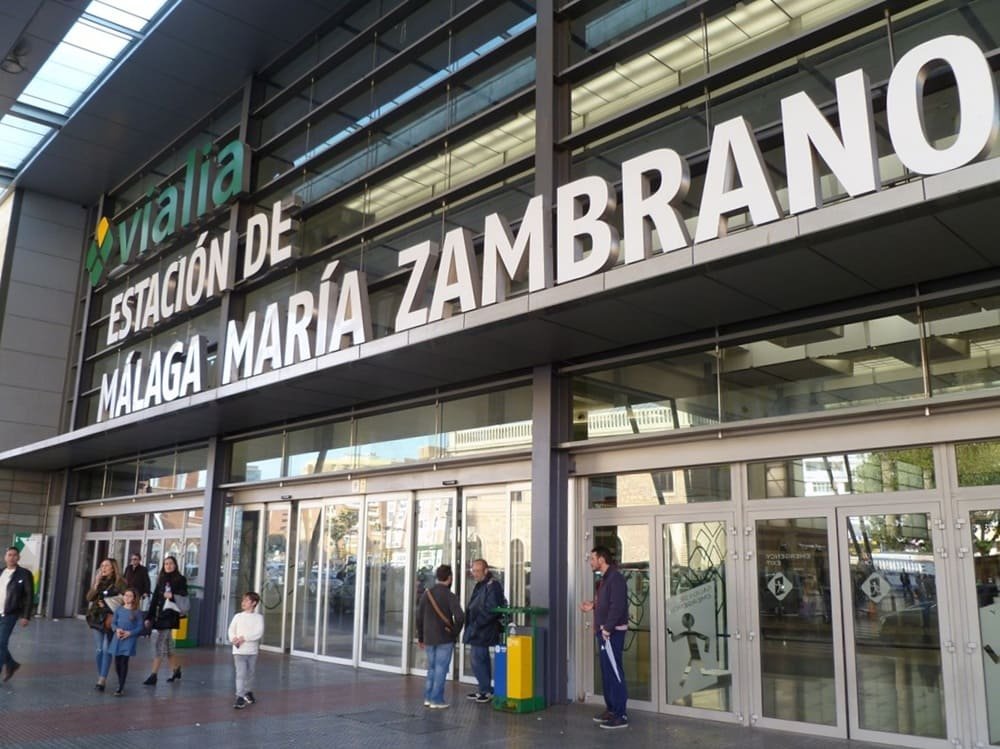
Málaga’s main railway hub connects directly to the airport via Cercanías commuter trains (Line C1). Key services include:
- High-speed AVE trains: Madrid (2.5 hours), Córdoba (1 hour), Seville (2 hours)
- Regional trains: Fuengirola (40 minutes), Álora (50 minutes)
- Airport connection: 12-minute ride to Terminal 3 (€1.80)
The María Zambrano station also offers metro connections, taxi ranks, and bus interchanges.
Málaga Bus Station
The modern Málaga Bus Station (Estación de Autobuses) serves as the main coach terminal with:
- Long-distance routes: Madrid (6 hours), Granada (2 hours), Valencia (9 hours)
- Coastal services: Frequent buses to Marbella (1 hour), Nerja (1 hour), Estepona (1.5 hours)
- International lines: Connections to Morocco via Algeciras
- Urban buses: EMT routes to all city districts (€1.30 per ride)
Located just 500m from the train station, with luggage storage and tourist information.
Málaga Port (Cruise Terminal)
The Málaga Cruise Port, with its iconic Palmeral de las Sorpresas promenade, welcomes:
- Cruise ships: 500+ annual calls from major Mediterranean routes
- Ferries: Seasonal connections to Melilla (North Africa)
- Water taxis: To nearby beaches and marinas
Just a 15-minute walk from the historic center, with excellent public transport links.
By Car: Major Access Roads
Málaga’s highway network connects seamlessly to all Andalusia:
A-7 Mediterranean Highway
Coastal route from Algeciras (west) to Nerja (east), passing all Costa del Sol resorts.
A-45
Northbound to Antequera and Córdoba, connecting with A-92 to Granada/Seville.
AP-7 Toll Motorway
Faster alternative to A-7 between Málaga and Estepona.
MA-20 Ring Road
Circles the city, connecting airport (south) and highways (north).
Parking tip: Use secure parking at Muelle Uno (port) or Larios Center shopping mall.
Málaga-Costa del Sol Airport (AGP): Andalusia’s Gateway
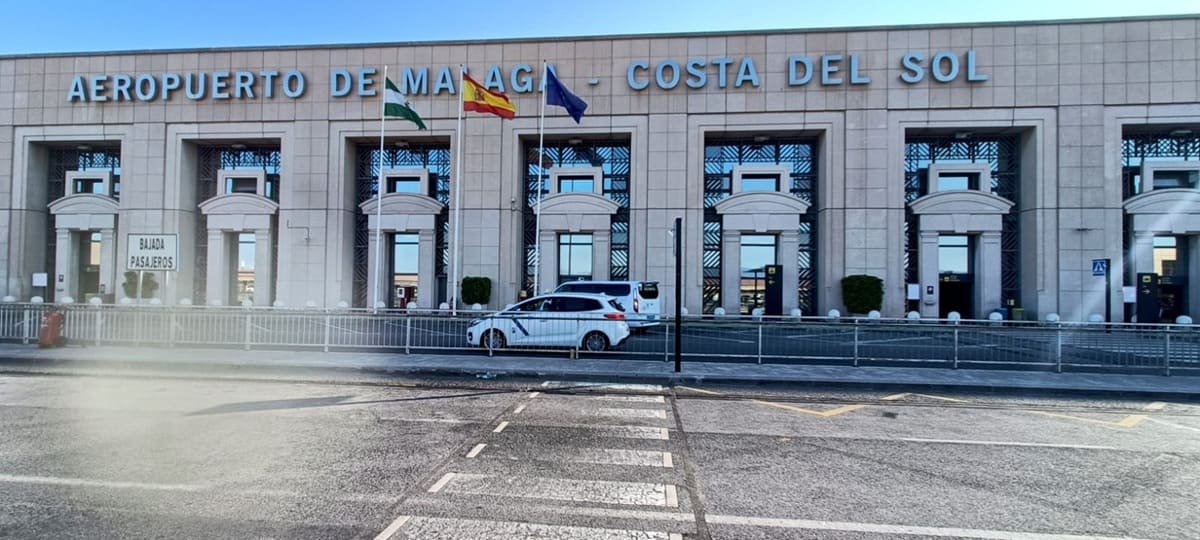
As the main international gateway to Andalusia, Málaga-Costa del Sol Airport serves over 27 million passengers annually, consistently breaking traffic records. Ranked as Spain’s 4th busiest airport, it combines modern facilities with efficient operations, located just 8km southwest of Málaga city center. The airport’s three terminals handle everything from budget European flights to intercontinental routes, making it the perfect starting point for your Costa del Sol adventure.
International Connections
European Cities (Direct Flights)
- UK: London (7+ daily flights), Manchester, Edinburgh
- Germany: Berlin, Frankfurt, Munich, Düsseldorf
- Scandinavia: Oslo, Stockholm, Copenhagen, Helsinki
Intercontinental Routes
- Africa: Casablanca, Tangier, Marrakech
- Middle East: Doha (Qatar Airways), Dubai (seasonal)
- America: New York (seasonal summer flights)
Domestic Network
- Madrid: 10+ daily flights (1h15m)
- Barcelona: 8+ daily flights (1h30m)
- Balearic Islands: Palma de Mallorca (summer)
Málaga Airport Transfers
Train (Cercanías Line C1)
Direct connection to Málaga Centro-Alameda (12 mins) and María Zambrano station (17 mins). Runs every 20 mins (€1.80).
Express Bus (Line A)
24/7 service to Málaga city center (30 mins, €3). Night buses available.
Long-Distance Buses
Direct routes to Marbella (45 mins), Fuengirola (30 mins), and Torremolinos (15 mins).
Marbetaxi Services
Premium door-to-door transfers with English-speaking drivers. Fixed prices, 24/7 availability, and flight tracking.
Rental Cars
All major companies available at Terminal 3. MA-20 highway provides direct city access (15 mins).
Shared Shuttles
Cost-effective option for Costa del Sol resorts with pre-booked shared rides.
Málaga: Where Ancient Charm Meets Modern Vibrancy
Málaga stands as a jewel of the Mediterranean, offering visitors an irresistible combination of sun-drenched beaches, three millennia of history, and cutting-edge cultural attractions. The city’s enviable climate—with over 300 sunny days per year—complements its rich gastronomy, world-class museums, and the warm hospitality of its people.
As Andalusia’s most connected hub, Málaga serves as the perfect base to explore southern Spain’s treasures. The high-speed train puts Seville (2h) and Granada (1.5h) within easy reach, while charming white villages like Ronda, coastal gems like Marbella, and historic sites like Antequera make ideal day trips.
Balancing Growth & Sustainability
While Málaga’s popularity brings economic benefits, the city faces challenges common to successful destinations:
- Managing tourism seasonality and overcrowding
- Preserving local identity amid rapid internationalization
- Addressing housing affordability for residents
- Reducing environmental impact through sustainable policies
Initiatives like the Sustainable Málaga program demonstrate the city’s commitment to responsible tourism.
Essential Contacts
Emergency Services
Medical Assistance
Tourist Support
Thank you for exploring Málaga with us. Whether you’re here to walk in Picasso’s footsteps, savor fresh seafood by the sea, or simply bask in the Andalusian sunshine, we wish you an unforgettable stay in this city where history and modernity dance together under the Mediterranean sky.
— The Marbetaxi Team

